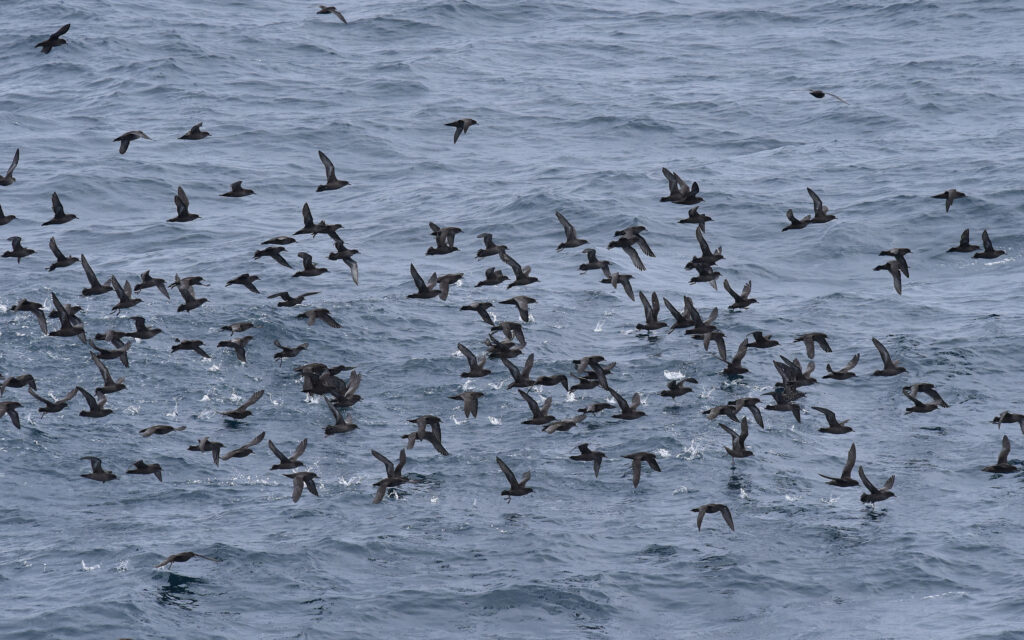An important phase of NRM South’s ‘Priority actions for Eastern Quolls on north Bruny Island’ project has commenced. Feral cat trapping is now underway around the island’s short-tailed shearwater colonies, located on The Bruny Island Neck Game Reserve. Over the next two years, NRM South will be supporting this work through $1.5M in project funding from the Australian Government’s Environment Restoration Fund.
Bruny Island’s shearwater colonies are hotspots for feral cats, with some of the highest cat densities recorded in Australia – as many as 15 cats every square kilometre (compared to a national average of one cat every three to four square kilometres).
Cats congregate in the short-tailed shearwater colonies on Bruny Island particularly after the migrating birds arrive in September from the Northern Hemisphere. In the subsequent months, the birds dig their burrows, reforge pair bonds, and breed. Each day the birds leave their burrows to forage, providing easy pickings for feral cats.
Rosie Hohnen the NRM South project manager says this creates a problem not just for the birds but for many native animals on Bruny.
‘Every year feral cats have a huge impact on Bruny Island’s shearwater population. The birds are an abundant source of food for cats, supporting big numbers, which prey on other native species, particularly after the birds leave on their migration in May.’
Conrad Daniels, manager for Bruny Farming and a feral cat control contractor based on Bruny Island, has observed the devastation caused by cats firsthand but he is hopeful that the trapping in the shearwater colonies will help protect the birds.
‘Feral cats are in big numbers around shearwater colonies and I’ve seen a lot of the devastation they’ve caused. After previous trapping work, we saw a significant dent in the cat population and a definite change for the better in shearwater colonies. We’re hoping to see a rapid decline in younger cats now trapping has started as they’re easier to catch.’
Dr Jennifer Lavers, seabird expert at the University of Tasmania, says that short-tailed shearwaters are under pressure from many threats, including fisheries by-catch, plastic and chemical pollution, ocean warming and invasive predators such as cats.
Control of invasive predators such as feral cats is a very effective strategy that local communities can implement to help support the birds, says Dr Lavers. In 2010, a global review of the impacts of predator removal on seabird colonies published by Dr Lavers, found that on average the breeding success of seabird populations increased 25% in years following predator control, with some increasing as much as 65%.
‘In colonies such as those found on north Bruny, adult breeding birds are the most important component of the population. Feral cats often target breeding birds when they leave their burrows, causing big impacts. Significant population declines have been seen in shearwater populations (and other seabird species elsewhere) when cats are present in colonies. Invasive predator control can be a really powerful way of increasing the breeding success of the birds and supporting them in the long term.’
This project is delivered in partnership between Kingborough Council, Biosecurity Tasmania, Bruny Farming, weetapoona Aboriginal Corporation, Parks and Wildlife Service and the Ten Lives Cat Centre.
Image credit: Short-tailed Shearwaters, Eric Woehler
